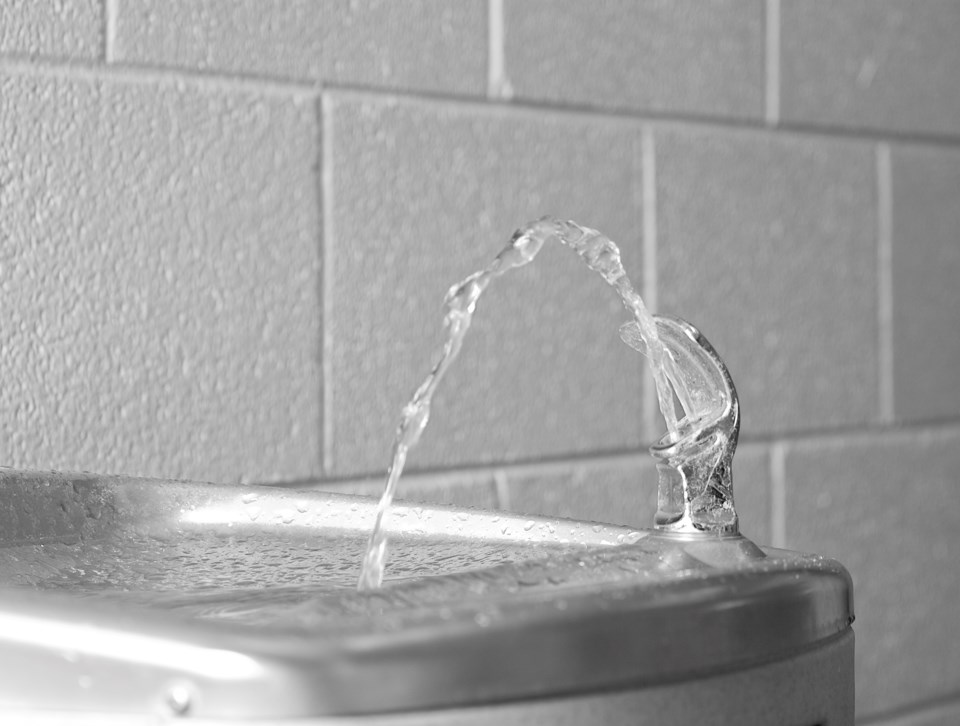A Burnaby elementary school water fountain has been squirting out water containing four times the maximum acceptable concentration of lead.
The fountain at Forest Grove Elementary was tested in April, and the water was found to contain 42 parts per billion (0.041 mg/L) of lead, compared to the Health Canada allowable level of 10 parts per billion (0.010 mg/L), according to School District No. 41 health and safety officer Terry Gomez.
The discovery was made during a comprehensive survey of all of the district’s drinking water after a February letter from the education ministry telling all B.C. districts to test drinking water for lead every year.
The ministry move came after public concerns were raised over lead in schools in northwestern B.C.
After more than 160 tests in Burnaby so far, the single fountain at Forest Grove was the only drinking water source in the district found to have higher-than-safe levels of lead.
The fountain was shut down immediately and removed, according to Gomez, and the district is still finishing up an investigation.
“It’s most likely been cross connected,” he said. “We’ve taken multiple subsequent samples to trace that line back to where it’s possibly cross connected with a hot water supply.”
The warmer the temperature, the more likely lead will go into solution in the water, Gomez said, and that’s why people are advised to run a tap or fountain until the water is cold before taking a drink.
There was a big push in schools to promote this practice when Gomez first started in Burnaby in 1999, he said, and janitors used to run school taps and sinks first thing in the morning to clear water warming in the pipes overnight, but the practice has fallen off.
“We got away from this because of all the water bottles that have been brought on,” Gomez said. “Kids bring their own water. It fell off people’s radar.”
Testing in the past, meanwhile, was mostly conducted on a complaint-driven basis.
“Every once in a while we would do some random testing, but it wasn’t formalized that we would do x number every year,” Gomez said. “It was largely complaint driven or queries.”
The number of full workups – including tests for lead and other toxicants as well as bacteria and turbidity – averaged only about one or two a year, he said.
Once the current survey is completed by the end of July, however, all of the district’s drinking water will have been tested, according to Gomez, who expects to conduct a total of about 250 tests at an expense of up to about $10,000.
The results will be collated and a summary forwarded to the district’s building and grounds committee. The report will then be available on the district website.
It’s not known how long higher-than-safe levels of lead have been coming out of the fountain at Forest Grove, which opened in September 1986 (the plumbing code was changed in 1990 to limit the use of lead solder in drinking water pipes).
Gomez said the original ceramic fountain had been replaced by a stainless steel one, and pipes might have been cross-connected then, so the problem may not date back to when the school was built.
He also said the fountain was not in the main section of the school, and the test results are best understood in context.
“Even if it was pumping out this 41 parts per billion – not million but billion, which is one thousandth of a million – if you’re drinking lead-contaminated water, you need to be drinking it every day and accumulate it,” he said. “You have to put it into perspective as to how many kids were actually using that fountain and how often they were using it.”



